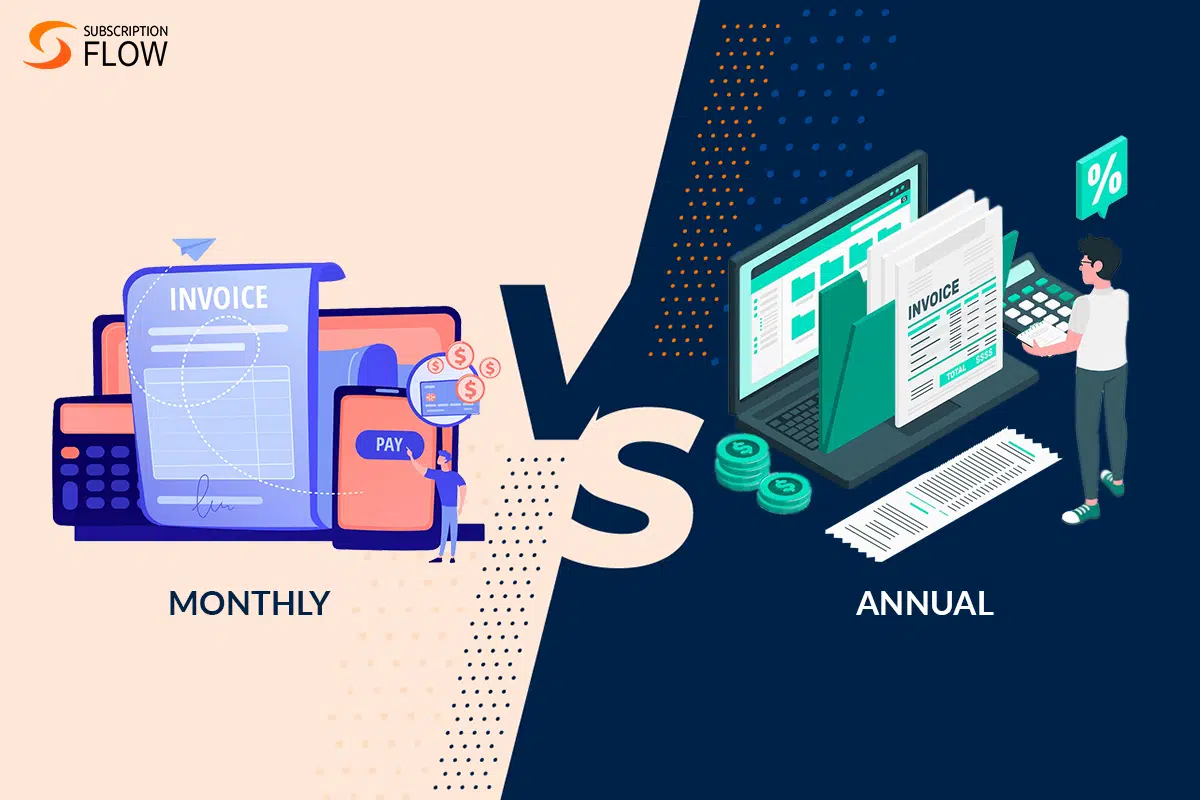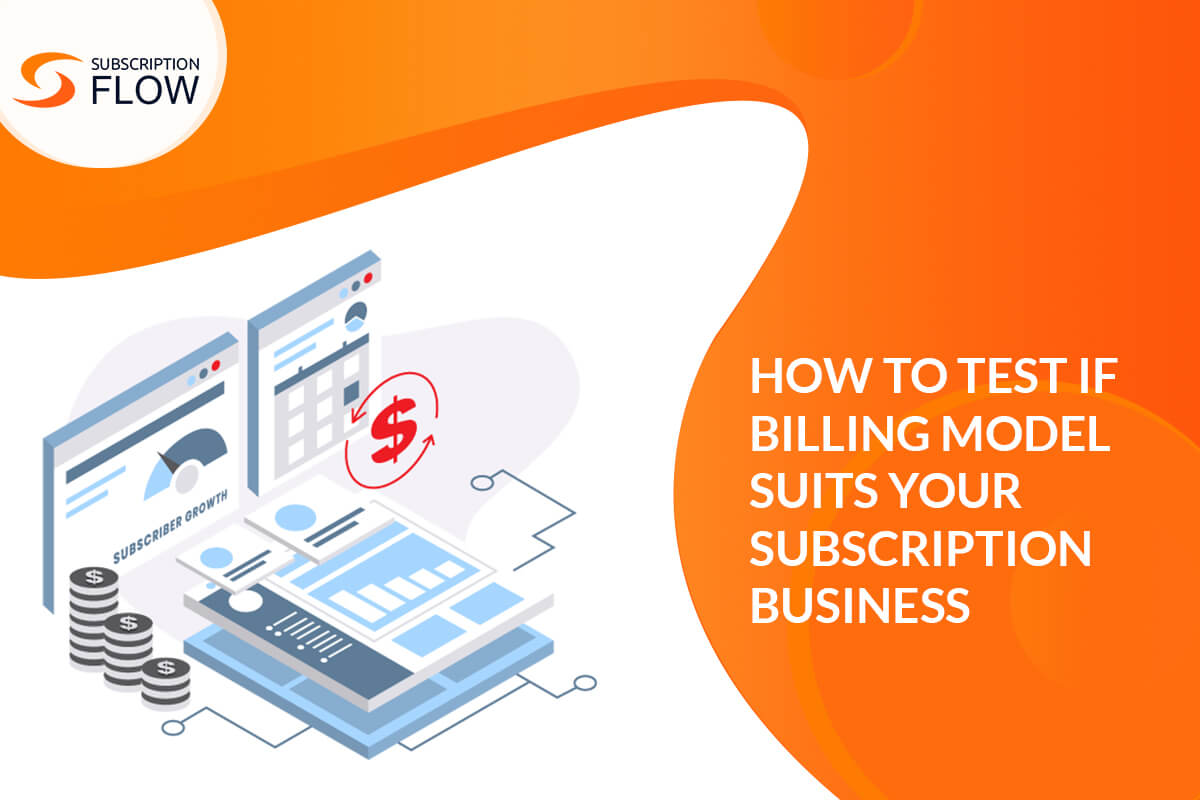
Yearly vs Monthly Billing: Which Pricing Model Should You Choose?
The debate between yearly vs monthly billing has been around since businesses have had to choose a billing model and frequency. Both methods have pros and cons, and the best choice for your business will depend on several factors.
In this article, we’ll take a closer look at annual and monthly billing so you can make the best decision for your business.
Annual Billing
With annual billing, customers pay for their service as a consolidated payment once per year. This method is often used by subscription and SaaS businesses that offer services on a recurring basis, such as software or website hosting. Annual billing allows customers to pay for a full year of service upfront, saving them money in the long run. It also gives businesses a steadier cash flow, as they know they will receive payment in full at the beginning of the year.
There are some drawbacks to annual billing, however. Customers may be less likely to renew their subscription if they’re unhappy with the service, as they would have to pay for another full year upfront. In addition, customers may forget to renew their subscription after a year, if the automatic deduction is not enabled, which can lead to a loss of revenue for the business.
Monthly Billing
With monthly billing, customers pay for their service on a month-to-month basis. It is the most common recurring billing model, and it’s often used by businesses that offer services that are used regularly, such as online subscriptions. Monthly billing allows customers to cancel their service at any time, which can be beneficial if they’re unhappy with the product or service. It also will enable businesses to charge customers monthly, as they are not locked into a yearly contract.
There are some drawbacks to monthly billing as well. Businesses may have to deal with more customer churn, as customers can cancel their subscriptions anytime. In addition, companies may have to offer discounts or incentives to customers to encourage them to sign up for a more extended period. Are you still confused about monthly billing vs yearly billing? Keep on reading.
Yearly vs Monthly Billing: What Are The Benefits Of Each?
Annual Billing
With annual billing, you make one payment for the year upfront. It has a few advantages.
First, it’s often cheaper than monthly billing. It is because many companies offer a discount for paying annually.
Second, it’s more convenient. You don’t have to remember to make a payment every month. And if you have trouble budgeting, annual billing can help you avoid late fees and other penalties.
Finally, annual billing can help you lock in rates. It is beneficial if you’re concerned about prices going up in the future. You can avoid any possible price increases by paying a year in advance.
Monthly Billing
With monthly billing, you make smaller payments each month. It has a few advantages over annual billing.
First, it’s more flexible. If your customer needs change or they find a better deal elsewhere, a client can cancel service at any time without penalty.
Second, it’s more convenient for some people. Monthly billing may be a better option if you have trouble budgeting or don’t want to commit to a year-long contract. Finally, monthly billing can help you avoid significant upfront costs. Paying for a year of service can be difficult if you’re on a tight budget. With monthly billing, you can spread the cost out over time.
So which is better – annual vs monthly billing? The answer depends on your needs and preferences.
Other Recurring Billing Best Practices
In addition to understanding the benefits and drawbacks of monthly and annual billing, there are a few other best practices you can implement to ensure your recurring billing is as effective as possible.
Consider Offering Discounts For Prepaying
Many subscription businesses provide their customers with a discount for prepaying for a more extended period upfront. It helps offset the cost of providing the service and encourages customers to commit to using your service for more extended periods. Just be sure to communicate any expiration dates or terms associated with the prepaid service, so there are no surprises down the road.
Make It Easy To Upgrade Or Downgrade
As your customers’ needs change, they may want to upgrade or downgrade their subscription level. Ensure it’s easy for them to do so by providing labelled upgrade and downgrade options in your customer portal or account management page. And don’t penalize customers for downgrading – offer prorated pricing, so they only pay for the services they need.
Offer Free Trials
Free trials are a great way to let potential customers try out your service before committing to a paid subscription. This way, they can experience the value of your service first-hand and make an informed decision about whether it’s worth paying for. Just be sure to set clear expectations about what features will be available during the free trial, so there are no surprises when the trial ends.
Have A Solid Cancellation Policy
It’s essential to have a clear and concise cancellation policy that your customers can understand. Be sure to spell out the conditions under which a customer can cancel their subscription, any associated fees, and how to cancel their account. And make it easy for customers to find this information – don’t make them search through your terms and conditions to find it.
You should remember these practices when implementing recurring billing for your business. Following these tips ensures that your recurring billing is efficient, effective, and customer-friendly.
What Is Subscription Pricing?
Subscription pricing is a recurring revenue model where customers pay a regular fee for access to a product or service. The subscription can be for a set period, such as one month, three months, six months, or one year. Or it can be an ongoing subscription with no end date.
With this pricing model, businesses can charge customers regularly (monthly, quarterly, semi-annually, or annually) for access to their products or service. The customer’s subscription will automatically renew until they cancel it.
Use SubscriptionFlow For All Your Billing Needs
SubscriptionFlow is a subscription management software that makes it easy to track and manage your subscriptions. With SubscriptionFlow, you can set up recurring payments, manage customer accounts, and automate billing processes.
Whether you’re selling physical goods, digital products, or services, chances are you’re using some form of subscription-based pricing. And if you’re not, you should be. Recurring revenue models are becoming more popular than ever before. By 2023, subscription e-commerce will make up 22% of all online retail sales worldwide.
They say seeing is believing. schedule a demo and see it yourself.










